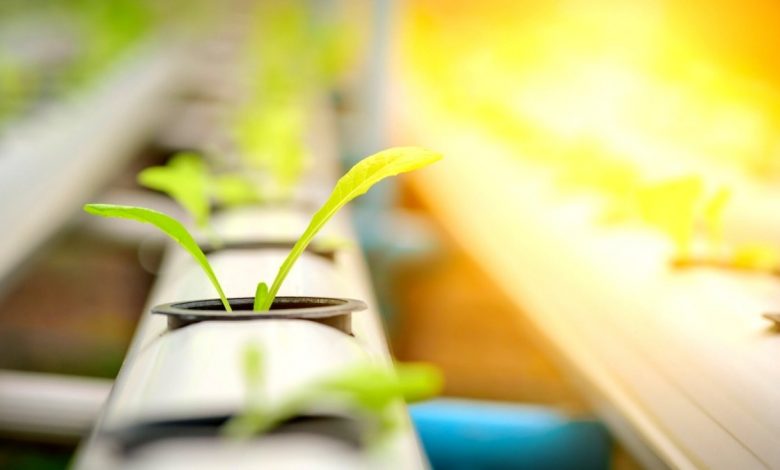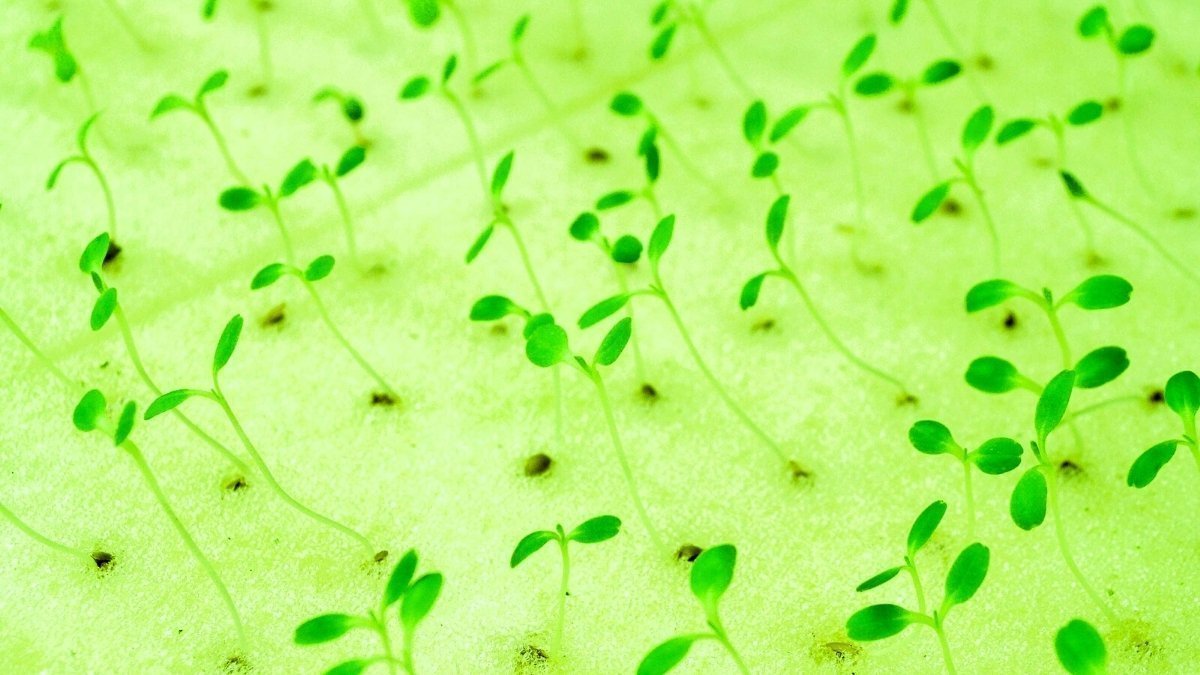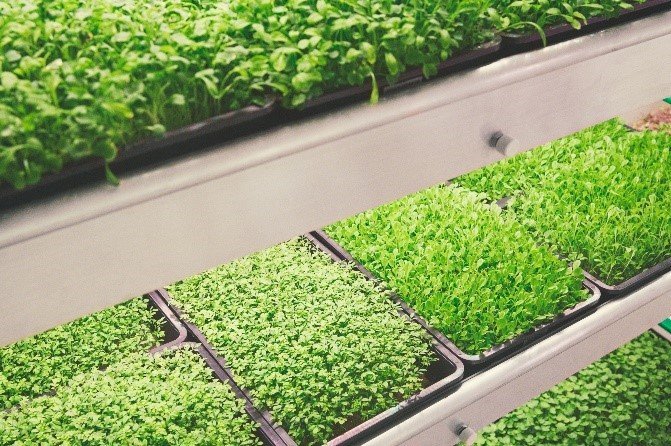Explainer: Hydroponics- A bridge to productive architecture

What is Hydroponics? What does it mean? How does it benefit? How can it be implemented in our homes? Know it all.
For anyone who isn’t aware of the concept these are some of the most common questions that come to mind. Thus, let us begin with understanding the changing trends and the need to cater to the situation.
With the changing dynamics of the world, an increase in population, decrease in land availability, depleting soil quality and diminishing sources of fresh water there is lack of organic, pesticide free vegetables that are available at our doorstep. What we need here today is a solution which can address majority of these problems.
Hydroponics simply put is the process of growing leafy vegetables without the use of traditional medium i.e. soil, but in water which is enriched in nutrients. It introduces us to a fresh concept which tells us how a plant doesn’t necessarily need soil to grow, all it needs is water, a little sunlight and a few nutrients that help it grow better, faster and in a more sustainable way.
The Future of Farming
By 2025, India’s population is estimated to be almost at par with China, and still growing at 1% per annum. With an exponential increase in the size of cities & exhaustion of rural lands, a vegetable growing on farmland travels great distances (on average of 2400 kms) before it reaches the cities and our homes, resulting in the loss of its nutritional value by 50% or even 100% in some cases.
To keep it fresh and edible for a longer period, it is also sprayed with pesticides and chemicals. Hence, the farther the produce travels the less nutritious it becomes by the time it is consumed. These testing times have also shown us how difficult it can get to avail fresh vegetables in times of transportation restrains. Hence, it is essential to implement a solution that dictates the future of farming in urban spaces.
Healthy doesn’t have to be expensive anymore!
To implement this system in your home, all you need is a semi-covered space as small as 1.5m x 2m and you’re good to go! How does that work? One hydroponics stand with 10 trays can easily serve a family of 10. The stand needs to be connected to a power source and the reservoir needs to be filled with nutrient rich water. Each tray is flooded with the nutrient solution which is pumped from the reservoir through the connecting pipes and excess water from each tray returns back to the source. The process ensures that the plant receives its nutrients continuously and thus gives the yield of much better quality than that of plants grown in soil. This method also grows vegetables faster than the traditional farming techniques.
Techniques involved in the process
There are mainly two types of systems in hydroponics, DFT and NFT. How do you choose which one to opt for? Let me make it easier for you.
1.NFT or nutrient film technique:
This needs a permanent flow of nutrients in form of a thin “film” around the roots. A pump transports the nutrient solution on an inclined plane (e.g. a tube, rectangular tray), on which the plant roots lie. They are continuously watered and supplied with nutrients. The constant flow prevents nutrient accumulation.

2.DFT or Deep Flow Technique:
In the Deep Flow Technique the plants are provided with approximately 4cm higher nutrient solution as compared to the thin nutrient film in NFT. The basic procedure is the same. This type of hydroponics system is safer and better for small scale use as the roots of the plants are still supplied with nutrient solution in an event of pump failure or power cut whereas in the NFT system, there is no supply of nutrient solution when there is an electricity cut and therefore the plants can stay fresh and alive only for a few hours after. In NFT the roots must have unhindered access to nutrients and oxygen to be able to grow quickly. Alternatively, for large scale commercial use, NFT is preferred over DFT because of its other advantages.

Hydroponics from the lens of a Designer
As architects it is important that we embrace the newer technologies available to us and implement them into our designs that ultimately help the people who inhabit our spaces and natural resources. One project alone may not change the scenario, but if every individual does their bit, together we can make a huge difference. Therefore combining agriculture, technology and architecture can be a great start!
The simplicity and beauty of this setup lies in the fact that it can easily be incorporated in an already existing premises with minimal alterations. This technique is here to inspire and change the way designers, architects and consumers look at a particular space. Let’s understand how the application of hydroponics can break stereotypical boundaries in architecture.
1. In residential towers:
Don’t have a kitchen garden to grow your greens? No problem. A small corner approx 3ft by 5ft in a flat system is all that you need to set this up and since this technique does not require direct sunlight to grow plants it can easily fit in the utility space provided or even in a balcony.
By growing your greens at home you’re adding a number of advantages to your list. 1. The produce is preservative and pesticide free 2. It’s super fresh and of premium quality and does not go bad until its cut 3. You’re helping reduce carbon emissions produced by large scale traditional farming and the transportation that is required to take the produce from one place to the other. 4. You’re not spending as much money on your groceries 5. It helps you save a lot of space in your refrigerator and 6. You can make yourself as many mojitos and fresh salads from all the mint and greens that you grow hydroponically!
2. In your bungalow:
Recognizing the growing consumer demand for healthier, more sustainable ways of living, bringing the farm to table concept home can be a great idea and Hydroponics makes bringing about this change in lifestyle a lot easier. Not only does it grow vegetables faster but also a lot simpler and in a more efficient way. A hydroponics stand can easily be set up on your terrace, outside your kitchen in the utility space or even along an unused wall in your garden.
3. In Offices:
Our workplace is where we spend 60% of our time and thus focusing on how to create healthier office environments should also be taken into consideration. Applying simple yet intelligent architecture solutions to a space can help keep the cost of add on’s low while making it beneficial for all the users utilizing the space. An office if equipped hydroponically can generate fresh produce for all the professionals working there. Who wouldn’t enjoy picking their choice of greens to make themselves a fresh bowl of salad everyday along with lunch? Wouldn’t a dining space opening up to a lush green systematically arranged hydroponics setup be ideal? It most definitely will! Healthy interactive environments in workplaces are beneficial because they promote a friendly atmosphere and help motivate their employees to do their best and increase recruiting potential.

4. In your community space:
A small yard, a corner in a community garden or an unused space in your society can easily be turned into a thriving hydroponic setup which can be used by everyone living in and around that area.
It acts like a green fabric that produces elements for urban spaces. Some plants can be placed along building walls to create vertical gardens, covering unattractive parts of a building and even the city at large giving it the right aesthetics, function and utility.
5. In restaurants:
Root-to-stem, farm-to-fork, selling to serving, keeping food as local as possible is a great way to go about it especially in the service industry. Instead of using vegetables which have been transported for over a 1000 km, using greens grown on-site is always better. It provides with on-site instant access to fresh and flavoursome leafy veggies for some freshly prepared food. It is believed that the final product is far better than anything you can import, or indeed grow naturally. The customer can enjoy year-round exotic and fresh produce that inspires cuisines. Rolling out a salad bar from where fresh produce could be served straight up can also add value. The hydroponics system can be set up outside as an extension to the kitchen or can substitute the restaurant landscape to enhance the experience by adding live greenery to the surroundings. It can also make its way into the interiors of the restaurant by strategically placing them in regular intervals between seating arrangements.
Grow anything, anywhere, anytime!
1.Cultivo Greens:
Mrs Dipal Patel who hails from Aurangabad started growing veggies hydroponically in her house about a year ago only to realize the abundant harvest this unique technique could provide with the simplest means. She subsequently went ahead and converted her interest into a home-grown business. Today in a total area of 800 sq. ft. with an aggregate of around 300 plants, her homegrown brand, Cultivo Greens, is making rounds as a simple solution for fresh, exotic and premium quality greens available at the doorstep.

2. Space10-
Back in 2017, IKEAS’ innovation lab Space10, showcased a pop-up farm at the London’s Design Festival. Their setup comprised of a wooden structure measuring two square meters and accommodating three levels of crops grown hydroponically. These tiny greens were used to prepare around 2000 nutritional salads. Interestingly, the plants in this setup are hooked up to Google’s voice-controlled Home device, so that farmers can talk to the plants and find about nutrition levels. Modular setups like these can be put up like a pop up stalls at malls, theatres, parks and other community spaces.

The rampant growth of today’s concrete jungles across countries will not leave much land at our disposal to venture into sustainable farming. As hydroponics moves towards a more sustainable vision for the market, the biggest advantage of it is that it works on an extremely small scale, while remaining affordable and easy to use.

It is safe to say that this upcoming system is bringing agriculture to your doorstep. As architects and designers, it is of value to understand how this hydroponic vision can be beneficial for the future of architecture. It’s easy and varied application has helped it become one of the most adaptive new techniques of procuring fresh produce with little or no hassle. So wouldn’t it be exciting to see the future of farming begin in our own backyards and make farm-to-table a reality?
